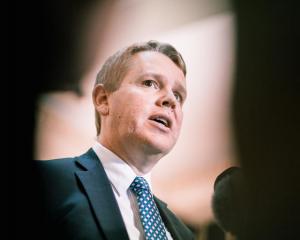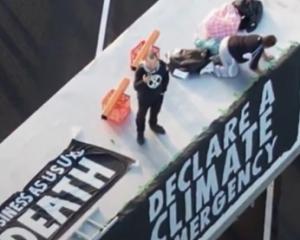As local environmental projects were celebrated yesterday, some might have questioned if small-scale initiatives will be enough to save the world from disaster.
World Environment Day highlighted waste-minimisation projects, workplace travel plans and sustainable living courses but many scientists say that in the face of melting ice-caps and spreading drought, global action is needed.
American climate activist Bill McKibben and others have launched 350.org, an international campaign dedicated to gaining a global climate treaty that lowers carbon dioxide levels in the atmosphere to under 350 parts per million (ppm).
That is the figure that Nasa scientist James Hansen says we need to get back to if we wish to "maintain a planet similar to that on which civilisation developed".
At present the level is 387ppm and it is rising by about 2ppm every year.
McKibben recently told Otago audiences the only way to get the change the world needs, within the timeframe required, is to drastically increase the price of fossil fuel - to stop burning so much coal and start using sources of renewable energy, such as solar and wind energy.
Aaron Packard, the national co-ordinator of 350 Aotearoa, says many people see the UN climate conference in Copenhagen in December as the last chance to reduce the impact of climate change.
But if the meeting were held now, it would produce a treaty that would be inadequate.
To influence negotiators ahead of time, the movement is organising an international day of action on October 24. Activities planned in Dunedin include 350 people playing music, 350 people surfing and a street march.
New Zealand's carbon emissions are small in global terms but the country still has a responsibility to lead the way, says Packard, a Victoria University student who is finishing a masters degree in environmental studies.
"We have huge potential to do that because of the scale of our country. We're small enough that we can adapt quickly and we've been shown to be innovative in the past."
Climate policy and carbon markets specialist Sean Weaver says the 350ppm target is realistic but it will take a "substantial effort" to reach.
Weaver, principal of Carbon Partnership Ltd, says 7 billion tonnes of carbon emissions need to be avoided annually for the next 50 years.
That might sound impossible but the task is achievable when broken into seven 1-billion slices or "stabilisation wedges".
"A 50-fold expansion of wind-energy generation globally would produce one wedge, and over 50 years, that's very do-able."
Other wedges would involve capturing and storing those fossil carbon emissions that we do produce, and growing more forests while avoiding deforestation, especially in developing countries.
New Zealand could contribute to most of the so-called wedges, he adds.
It could, for instance, grow more plantation forests and keep them as that, decrease its use of fossil carbon for electricity and replace it with renewable sources, and increase the energy efficiency of houses by using insulation and solar hot water.
Many of the tasks would cost nothing and others could be funded by carbon credits.
One way to multiply the gains would be to set up a voluntary carbon market, he adds.
A business wanting to go carbon-neutral would measure its carbon footprint, reduce its emissions as much as possible then buy units from somebody else to offset those emissions that could not be eliminated.
That third party might be a group of households that would not consider reducing emissions if not for the funding they would receive to install cleaner technologies.
Weaver says global warming is a huge threat to the global economy, "not just a worry to the birds, bees and frogs".
Widespread drought would reduce agricultural production, which could lead to large-scale suffering and resource wars.
Drought in eastern New Zealand would be a significant challenge to our agricultural sector and to water allocation, which is already tight.
While some of the changes needed to meet the 350ppm target would be "hard work", many of them would not be, he adds.
Houses would be more energy efficient. Public transport would be cleaner and more reliable.
More cars would run on biofuels and electricity. People would pay less to energy companies, so would have more money to spend in other areas.
But life would not be much different from now: "I don't see a future where everyone is forced to car pool with each other . . ."
The biggest changes would occur when large companies made major investment decisions.
Which begs the question, are small-scale activities like workplace travel plans worth the effort?
Dunedin City Council safe and sustainable transport co-ordinator Charlotte Flaherty says her feeling is "that every little bit counts".
Packard says more people might be switching to efficient light-bulbs but those sorts of changes on their own "aren't going to add up in time".
"The answer is both are equally important," he says.
"We need things happening from a grassroots level . . . but we also need top-down measures that look at the way society is structured and really that's based around cheap fossil fuels.
"A significant change in things at the top level, such as putting a price on carbon, will have a massive flow-on effect across society."











